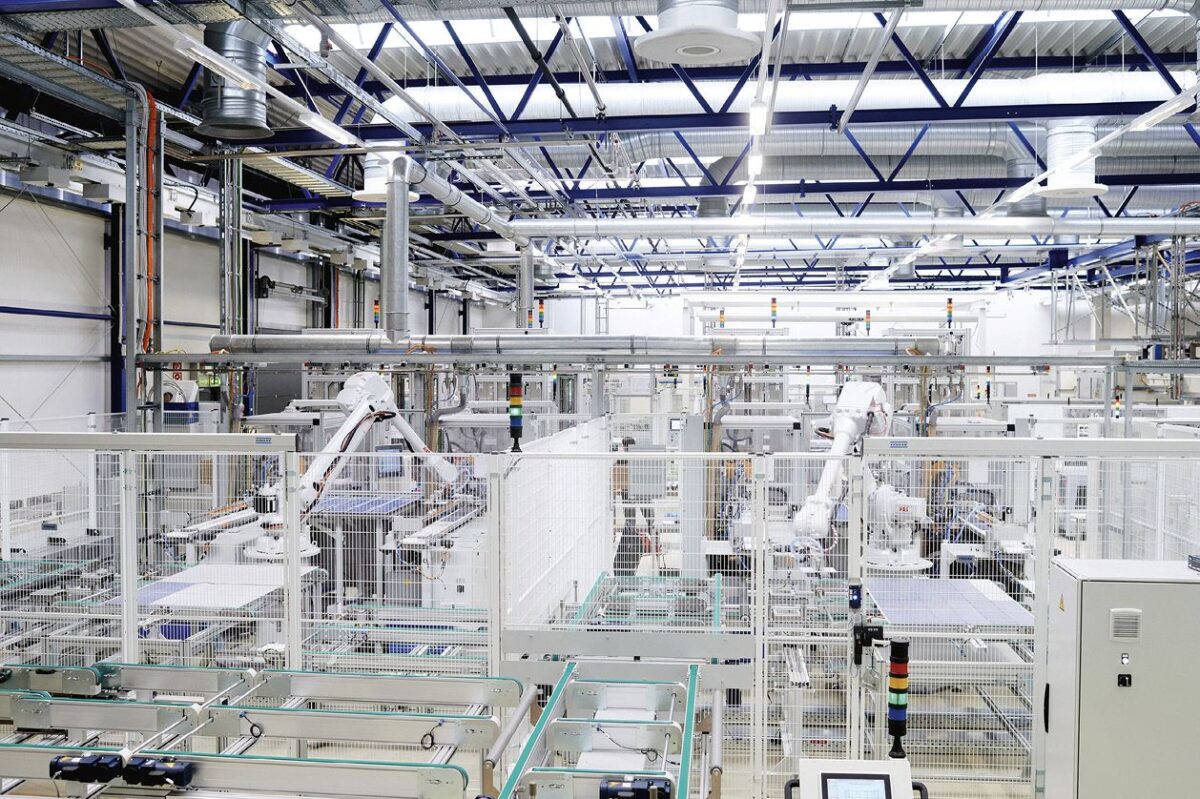https://www.pv-magazine.com/2023/07/01/weekend-read-waiting-is-not-an-option/
Waiting is not an option

Research has shown that globalized supply chains for solar will be key to ensuring that PV plays a larger role in the energy system.
Photo: Meyer Burger
Since their beginnings in 2016, the Terawatt Workshops – organized jointly by Germany’s Fraunhofer Institute for Solar Energy Systems (ISE), the US National Renewable Energy Laboratory (NREL), and Japan’s National Institute of Advanced Industrial Science and Technology – have invited figures from the PV sector and research communities around the world to discuss the industry’s future and role within the wider energy system.
The workshops were originally convened to discuss the route to PV reaching 1 TW of installed capacity worldwide – a goal which was achieved in 2022. The group’s scope then widened to examine solar’s role in future energy systems. It arrived at a target estimate, for global annual PV installations, to reach 75 TW by 2050. Participants in the third workshop, held last year, realized that solar is one of the limited number of options to both meet future energy needs and cut greenhouse gas (GHG) emissions. Attendees also agreed that targets and an accurate picture of the role solar needs to play are vital in leading the industry to larger scale.
“A major global risk would be to make poor assumptions or mistakes in modeling and promoting the required PV deployment and industry growth and then realize, by 2035, that we were profoundly wrong on the low side and need to ramp up manufacturing and deployment to unrealistic or unsustainable levels,” explains Nancy Haegel, director of the NREL’s National Center for Photovoltaics.
Haegel and around 50 other industry leaders jointly authored a paper that examines the challenges and requirements for PV to reach 75 TW. The paper, “Photovoltaics at multi-terawatt scale: Waiting is not an option,” was published in “Science.” The authors examined other works on future energy systems, looking for those that best take into account growing trends such as sector coupling and increasing energy consumption in the Global South.
“In most cases, the models are based on photovoltaics generating 60% of the world’s electricity and on wider electrification of the transport and heating sectors,” said Fraunhofer ISE Director Andreas Bett. “Solar is by no means the only source of energy in these scenarios but it is a key one. And this will require a major scaling up of the whole industry.”
Bett said that the next 10 years to 15 years will be critical, as the solar industry enters its terawatt era and sets the foundations for an industry able to supply such a large part of the world’s energy.
“There is some uncertainty of course but this figure of 75 TW is the product of extensive discussions, and we believe it is realistic” says Bett. “An assumption like this enables us to really talk about what is needed in terms of growth rates for efficiency and manufacturing capacity. That is a very important message for the industry and if we were to wait until we know exactly what the number is, it will become even more challenging to reach.”
While the paper outlines the need for a major scale up of solar in the coming years, and conveys this message with some urgency, it also makes it clear that the goals are entirely achievable and that the industry is already on the right track. The past five years to 10 years have seen solar installations and manufacturing capacity grow at a rate of around 25% per year and, if this rate can be maintained, then the goal of 75 TW by 2050 can be reached. “Of course, people say it will be challenging,” says Haegel. “But many don’t realize that solar has already been growing at the required rate. So we tried to lay out this next step: what’s new and challenging about it, but also why it is absolutely achievable.”
Materials and manufacturing
The paper notes PV manufacturing’s rapid adoption of new technology as evidence of its ability to overcome new challenges. Listed achievements include diamond wire sawing, hydrogenation for defect control, and the move to larger wafers. Notably, all were quickly implemented and well managed across the supply chain.
Popular content
“Since 2010, the PV industry has gone from a somewhat slow-moving and conservative industry, focused on the cost of individual components … to a very dynamic industry that is more focused on levelized cost of electricity,” wrote the authors of the paper. The researchers observe that, most recently, TOPCon [tunnel oxide passivated contact] technology moved from initial industrially-relevant lab designs to mass production in only five years. “Recent analysis shows that it now takes about three years for the average cell efficiency in mass production to reach the efficiency of the champion cell fabricated in the industrial laboratory,” stated the paper.
The researchers conclude that PV’s use of silver is now the main material sustainability issue and the current consumption level of around 15 mg/W needs to be reduced by a factor of three or eliminated entirely. They advise that, as new materials are adopted, care should be taken to avoid similar situations with other scarce materials. “Techniques to address the use of scarce materials should be approached from an ecodesign perspective and analyzed by life-cycle assessment to confirm resulting impacts, evaluating metrics such as resource depletion and GHG emissions,” stated the “Science” paper.
The need for sustainability to be considered throughout the scale-up of solar manufacturing is also a key consideration. “R&D for ecodesign and recycling must be ramped up now to support rapid and sustainable scaling of PV,” wrote the authors. “The PV industry must continuously innovate to improve material sustainability and reduce the embedded carbon and energy required to manufacture and deploy PV.”
Despite the challenge posed by current silver consumption levels, the research has a positive message regarding future material consumption. The scale and efficiency required of the PV industry is achievable with resources available today.
“An important message for policymakers is that there is, in principle, no limitation on the materials side, the resources we need to reach 75 TW are available,” says Haegel. “It is very important that we have no fear. The message here is that yes, we can do it.”
Batteries, other tech
Another message prominent in the work is that solar is not alone and accompanying innovations will be needed in many other industries to achieve the goal of a fully renewable energy system. This means, first of all, comparable scaling in the energy storage, green hydrogen/e-fuels, and wind power industries.
Several industries will also have to update their practices. This includes increasing the acceptance of building-integrated PV; adoption of electrified heating and cooling in the building sector; widespread adoption of electric vehicles – with models to incentivize their charging during times of high PV generation – and closer links with the farming industry, via agrivoltaics. All of these developments are mentioned as strategies that can help solar remain on its path to becoming the world’s primary source of energy.
The paper concludes with the message that the next step is a focus on developing more globalized supply chains at all levels. This, along with other measures, will require support from policymakers around the world to ensure that solar is the first choice for energy expansion and that electricity networks are able to effectively make use of PV-generated electricity.
The paper concluded: “Recent history and the current trajectory suggest that sustained global growth in PV of 25% per year over the next decade, toward 75 TW of installed PV by 2050, can be achieved. Waiting is not an option.”
This content is protected by copyright and may not be reused. If you want to cooperate with us and would like to reuse some of our content, please contact: editors@pv-magazine.com.




